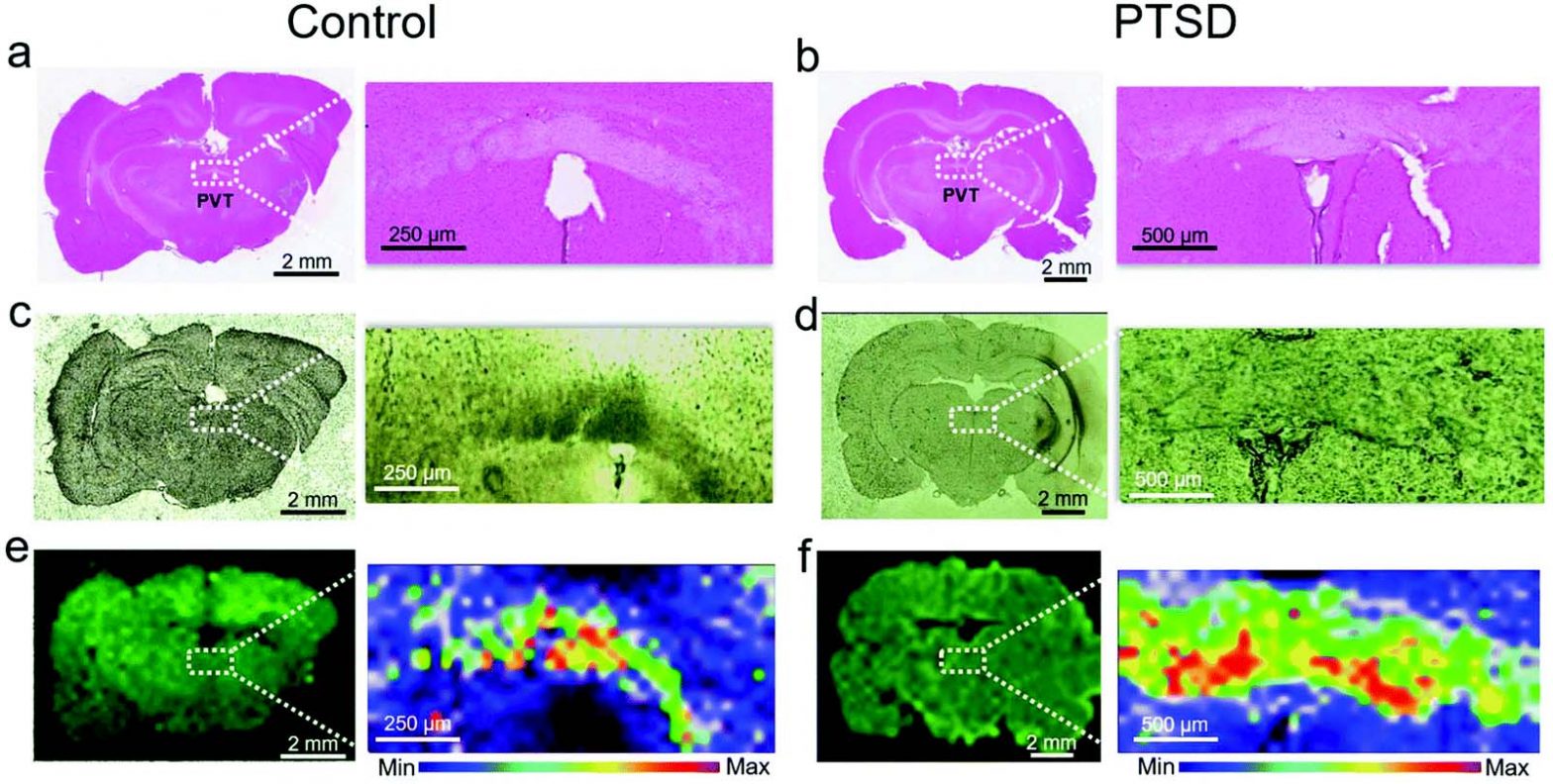- by MS ArticlesABSTRACT Tetrahydromethyltestosterone (THMT) and 20-hydroxymethyl-18-nortetrahydromethyltestosterone (20OHnorTHMT) are metabolites of the anabolic androgenic steroids methyltestosterone and metandienone. Both molecular structures are used as markers in anti-doping analysis. There are eight reasonable diastereomeric structures of each group relevant for metabolic purposes. Highly sophisticated mass spectrometers fail to confidently differentiate these closely related, yet non-isomeric and non-isobaric groups of molecules. Due to the […]
- by MS ArticlesMesoporous high-entropy oxides enable metabolic fingerprinting for pancreatic cancer
- by MS ArticlesMass spectrometry (MS) and top–down proteomics (TDP) have emerged as powerful tools to decipher proteoform-level information, advancing biological insight and translational research. This study unites leaders in capillary electrophoresis (CE) and MS from multiple institutions across the globe to showcase the reproducibility, unique information, and predictability of CE-MS for TDP analysis for a diverse set of platforms. Abstract Mass spectrometry […]
- by MS ArticlesSimultaneous determination of vitamin B12 and cobalt (II) in infant milk power using liquid chromatography-inductively coupled plasma mass spectrometry
- by MS Articles🎁 Season’s Greetings & GratitudeThanks for choosing us in 2025.Wishing you a peaceful holiday season and a successful new year — from our team to yours!#mswil #proteomics #LCMS #MassSpec #MassSpectrometry #Proteomics #Chemistry #BioMedical #Pharmancy #Metabolomics #Physics #MSWil #MakingScienceWork
- by MS ArticlesGlycoproteomics data are rapidly accumulating due to advances in mass spectrometry instrumentation and the development of specialized search engines (e.g., pGlyco3, Glyco-Decipher) that enable identification of N-linked glycopeptide spectral matches (GPSMs) together with glycan structures. These advances have greatly expanded the scale and depth of N-linked glycopeptides; however, the intrinsic structural heterogeneity of glycosylation remains challenging to interpret. No existing […]
- by MS ArticlesEffects of processing on the polyphenolic content of Armagh Bramley apple products and pomace
- by MS ArticlesThe STRiatin Interacting Phosphatases and Kinases (STRIPAK) complex is a conserved multiprotein module with functions in cell proliferation, cell growth, and cancer. Primarily examined through proteomic and in vitro studies, there is a relative lack of insight into the in vivo function of the STRIPAK complex during development. Motivated by the prominent interaction of STRIPAK and the CCM3 adapter protein, […]
- by MS ArticlesLike-SM proteins (Lsm) assemble into heptameric complexes that are conserved in eukaryotes. The Lsm2-8 complex is involved in the nuclear maturation of spliceosomal U6 snRNA, whereas the Lsm1-7/Pat1 complex associates with mRNA decapping complexes in the cytoplasm. A proposed role of Lsm1-7 is to recruit the decapping machinery to unstable mRNA that are rapidly deadenylated. However, the impact of deadenylation […]
- by MS ArticlesMycobacterium tuberculosis (Mtb) poses a significant global health burden. Rv0647c, an essential Mtb cell wall protein, is a potential drug target. We studied its Mycolicibacterium smegmatis (MSMEG) homologue, MSMEG_1353, using a CRISPRi conditional knockdown. MSMEG_1353 depletion increased cell width and volume, delayed log-phase initiation, slowed aggregation, reduced biofilm formation, and heightened susceptibility to antibiotics and sodium dodecyl sulfate (SDS). AlphaFold, […]
- by MS ArticlesMosquito larvae rely on a living microbiota for normal development because the microbiota supplies essential nutrients, particularly vitamins. Beyond vitamin provision, transcriptomic data suggest that the microbiota also supports other key nutritional processes. Here, we explored these roles by conducting a metabolomics analysis on Aedes aegypti third instar larvae following microbiota depletion. We sampled larvae and dissected guts 12- and […]
- by MS ArticlesSupercritical fluid chromatography is traditionally employed for nonpolar and moderately polar analytes, while the analysis of ionic compounds remains a recognized limitation of the technique. Here, we introduce a novel ultrahigh-performance supercritical fluid chromatography-mass spectrometry (UHPSFC/MS) method using a bioinert column, enabling the separation of lipids with a broad polarity range from nonpolar to ionic species. The UHPSFC/MS method was […]
- by MS ArticlesUnderstanding the tissue-specific distribution and metabolism of sex steroids is critical for elucidating their physiological roles and pathological alterations. However, existing in vivo approaches often require surgical castration to suppress endogenous hormones, disrupting systemic endocrine balance and limiting physiological relevance. Here, we present a novel mass spectrometry method combining systemic administration of deuterium-labeled sex steroids with high-sensitivity gas chromatography-tandem mass […]
- by MS ArticlesProteolysis Targeting Chimeras (PROTACs) are bispecific molecules that link a target protein to an E3 ligase, leading to ubiquitination and subsequent degradation. Their efficacy depends on their ability to form ternary complexes capable of being ubiquitinated, which are influenced by protein-protein interactions. Native mass spectrometry combined with surface‑induced dissociation (SID) is a sensitive technique for rapidly assessing protein structures, including […]
- by MS ArticlesPublication date: Available online 17 December 2025Source: Journal of Chromatography BAuthor(s): Hongjun Luo, Hui Li, Yongying Zhou, Wenhong Luo, Zhexuan Lin
- by MS Articles1) Today I just discovered the ACS Journal of Chemistry Education (or maybe re-remembered it was a thing?) And it's a treasure trove of interesting stuff. Example? Check out this cool story from the pandemic where students remotely analyzed DIA generated MS2 spectra. This is how it went (stolen brazenly from the paper)!
- by MS ArticlesJournal of the American Society for Mass SpectrometryDOI: 10.1021/jasms.5c00311
- by MS ArticlesJournal of the American Society for Mass SpectrometryDOI: 10.1021/jasms.5c00308
- by MS ArticlesA practical method for determining the rate of covalent modification of fragments and leads
- by MS ArticlesmzLearn as a data-driven LC/MS signal detection algorithm that enables pre-trained generative models for untargeted metabolomics
Murray Mass Spectrometry Group
Research group of Kermit Murray at Louisiana State University where we use lasers for sampling and imaging and study the chemistry and physics of laser ablation.

